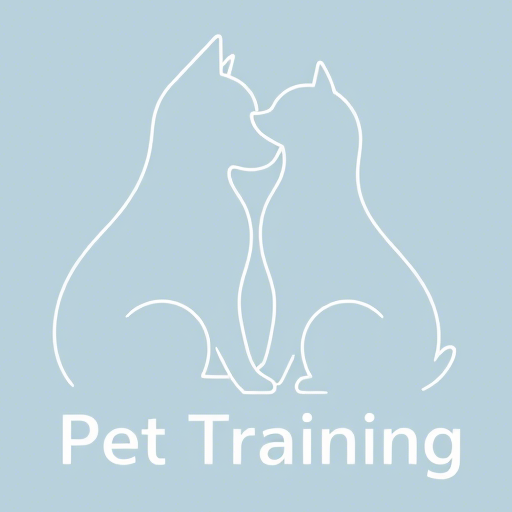Understanding the Raw Diet for Dogs Concept
The concept of feeding a raw diet for dogs has gained significant popularity among pet owners seeking more natural feeding options. This approach, often referred to as BARF (Biologically Appropriate Raw Food), aims to replicate what dogs would eat in the wild. Essentially, a raw canine diet consists of uncooked muscle meat, organ meats, raw bones, and occasionally vegetables and fruits.
Many proponents believe that this feeding method aligns with dogs’ evolutionary history. After all, before commercial pet food existed, dogs thrived on raw, whole foods. I remember when I first considered switching my Labrador to a raw diet; the transformation in his energy levels and coat quality was remarkable within just a few weeks.

Benefits of Raw Feeding for Canines
One of the primary reasons pet owners consider a raw diet for dogs is the potential health benefits. Many report improved dental health, as chewing raw bones helps clean teeth naturally. Additionally, dogs often experience shinier coats, healthier skin, and increased energy levels. The reduction in fillers and processed ingredients can also lead to smaller, less odorous stools.
Furthermore, some dogs with food sensitivities or allergies find relief on a raw diet. By eliminating common allergens found in commercial foods, many pets experience reduced itching, ear infections, and digestive issues. However, it’s important to note that individual results may vary, and what works for one dog might not work for another.
Nutritional Advantages of Raw Dog Food
Raw foods retain more natural enzymes and nutrients that can be destroyed during cooking processes. This means your dog gets more bioavailable vitamins, minerals, and proteins. The natural moisture content in raw food also helps with hydration, which is particularly beneficial for dogs that don’t drink enough water.
Potential Risks and Concerns
While there are potential benefits, it’s crucial to acknowledge the risks associated with raw diet for dogs. The most significant concern is bacterial contamination, such as Salmonella or E. coli, which can affect both pets and humans. Proper handling and hygiene are absolutely essential when preparing raw meals.
Nutritional imbalances represent another risk factor. Without proper planning, dogs might not receive all the necessary nutrients in the right proportions. This is why consulting with a veterinarian or canine nutritionist before starting any raw feeding program is highly recommended.

Creating a Balanced Raw Meal Plan
Developing a properly balanced raw diet for dogs requires understanding canine nutritional needs. A general guideline suggests approximately 80% muscle meat, 10% edible bone, 5% liver, and 5% other secreting organs. Some owners also include small amounts of vegetables, fruits, and supplements to ensure nutritional completeness.
It’s worth noting that transitioning to a raw diet should be gradual. Start by replacing about 25% of your dog’s current food with raw options, gradually increasing over 7-10 days. This allows your dog’s digestive system to adjust properly. For more guidance on transitioning your pet’s food, check out our article on how to transition your pet to new food.
Essential Nutrients in Raw Dog Nutrition
When planning a raw diet for dogs, ensure it includes adequate protein, fats, vitamins, and minerals. Calcium from raw bones is particularly important for dental and bone health. Omega-3 fatty acids, often supplemented with fish oil, support skin and coat health. Always research or consult professionals to create a nutritionally complete plan.
Safe Handling Practices for Raw Dog Food
Food safety is paramount when handling raw diet for dogs. Always wash your hands, utensils, and surfaces thoroughly after preparation. Store raw meats separately from human foods, and thaw frozen portions in the refrigerator rather than at room temperature. These practices help minimize the risk of bacterial cross-contamination.
Additionally, consider your household circumstances. Homes with young children, elderly residents, or immunocompromised individuals should exercise extra caution with raw feeding due to increased infection risks. In such cases, commercially prepared raw diets that undergo high-pressure processing (HPP) to kill pathogens might be a safer option.

Choosing Quality Ingredients
The quality of ingredients significantly impacts the success of a raw diet for dogs. Source meats from reputable suppliers, preferably human-grade quality. Organic, free-range, or grass-fed options often provide better nutritional profiles. Variety is also key—rotate protein sources like chicken, beef, lamb, and fish to provide a broad spectrum of nutrients.
When including vegetables, lightly puree or steam them to break down cell walls and make nutrients more accessible to dogs. Avoid toxic foods like onions, garlic, grapes, and chocolate. For more information on selecting quality pet foods, read our guide on how to choose the best nutrition for your canine companion.
Monitoring Your Dog’s Health on Raw Diet
Regular monitoring is essential when feeding a raw diet for dogs. Watch for changes in weight, energy levels, coat condition, and stool quality. Schedule regular veterinary check-ups to ensure your dog maintains optimal health. Blood tests can help identify any nutritional deficiencies or imbalances early.
Keep in mind that some dogs may experience temporary digestive upset during the transition period. This usually resolves as their system adapts. However, persistent issues might indicate that the specific raw diet isn’t suitable for your dog, or adjustments are needed. For dogs with sensitive stomachs, our article on best dog food for sensitive stomach offers additional insights.
Common Myths About Raw Feeding
Several misconceptions surround raw diet for dogs. One common myth suggests that raw bones are always dangerous. While cooked bones can splinter and cause harm, raw bones are generally safer and provide dental benefits. Another myth claims that all dogs automatically thrive on raw food—in reality, individual needs vary significantly.
Some people believe that raw feeding is prohibitively expensive. While quality ingredients cost more than basic kibble, many owners find the health benefits justify the investment. Additionally, buying in bulk and utilizing sales can make raw feeding more affordable than commonly believed.

When to Consult Professionals
Before starting any raw diet for dogs, consult with your veterinarian or a certified canine nutritionist. They can help assess whether this feeding approach suits your dog’s specific needs, considering factors like age, breed, health status, and activity level. Professional guidance is particularly important for puppies, seniors, or dogs with medical conditions.
For complex behavioral issues that might relate to diet or overall health, consider consulting a professional dog behaviorist. They can provide comprehensive advice on how nutrition interacts with behavior and training. The American Veterinary Medical Association and FDA provide valuable resources on pet nutrition and safety considerations.
Alternative Options to Full Raw Feeding
If a complete raw diet for dogs seems overwhelming, consider hybrid approaches. Some owners combine high-quality kibble with raw additions, or feed raw meals occasionally as supplements. Commercially prepared raw diets offer convenience while maintaining nutritional benefits, though they tend to be more expensive than homemade versions.
Another option involves lightly cooking meats to reduce pathogen risk while preserving more nutrients than fully cooked commercial foods. This approach might be suitable for households concerned about bacteria but interested in moving away from processed kibble. Remember, the best diet is one that keeps your specific dog healthy and happy.
Conclusion: Making Informed Choices
Implementing a raw diet for dogs requires commitment, education, and careful planning. While potential benefits exist, they must be weighed against risks and practical considerations. Every dog is unique, and what works beautifully for one might not suit another. The key is making informed, individualized decisions based on your dog’s needs and your circumstances.
Whether you choose to fully embrace raw feeding, opt for a hybrid approach, or decide it’s not right for your situation, the most important factor is providing balanced nutrition that supports your dog’s health and happiness. Regular veterinary care, observation, and adjustment will help ensure your furry companion thrives on whatever diet you choose.
Related Keywords: raw dog nutrition, BARF diet benefits, homemade dog food recipes, natural canine diet, raw feeding safety, dog health improvement, ancestral diet for dogs, balanced raw meals, pet nutrition guidelines, canine digestive health

